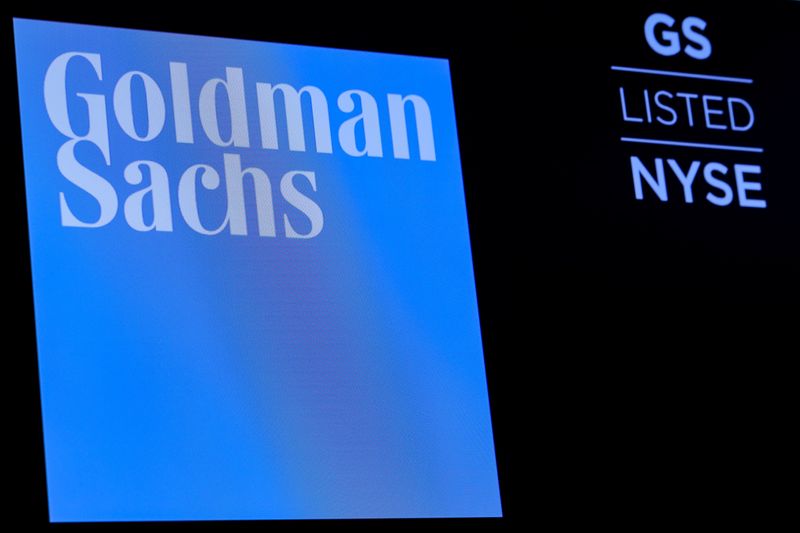By Saeed Azhar and Lananh Nguyen
NEW YORK (Reuters) - Goldman Sachs Group Inc (NYSE:GS) is expected to announce a major reorganization of its business lines on Tuesday, combining its trading and investment-banking divisions while likely sidelining its loss-making consumer unit.
Observers are questioning the rationale of the expected move, but say it could streamline the storied Wall Street firm. Experts were also puzzled about the future of Marcus, Goldman's digital consumer bank, for which Chief Executive Officer David Solomon had big ambitions to tap into Main Street customers.
"They've definitely innovated with Marcus... But the reality is, what's the cost of money that they're bringing in?" said Chris Marinac, Director of Research at Janney Montgomery Scott.
Goldman had to invest significantly to build the Marcus business and was offering savers a far higher rate of return to park money with them compared with retail rivals.
The group's reorganization sees its investment banking and trading businesses merged into a single unit, two people familiar with the matter told Reuters. Marcus will be absorbed into the bank's asset management and wealth unit, the sources said, confirming an earlier Wall Street Journal report.
The plans are expected to be announced on Tuesday alongside Goldman's third quarter earnings, which are forecast to show a sharp drop in net profit as dealmaking slowed.
It is the biggest shakeup since the company's investor day in early 2020 when it outlined plans for four core units: investment banking, global markets, consumer and wealth management and asset management.
A spokesperson for Goldman Sachs declined to comment.
The reshuffle comes as the Wall Street titan seeks to boost its income from fee-based businesses.
"This may be a way to put Marcus to the back burner as a way to de-emphasize its importance as an investment opportunity," said Mike Mayo, a banking analyst at Wells Fargo (NYSE:WFC).
Goldman is refocusing on its core business, said Marinac of Janney Montgomery Scott.
"They're excellent at trading, excellent (at) investment banking," said Marinac. "And even though those businesses may not be necessarily the best this quarter, they're still good business. Long term, this is a winning company, so you can't knock them at all."
Still, some observers said the logic behind the expected changes remains unclear.
Since becoming CEO in 2018, Solomon has sought to expand Goldman's footprint in retail banking.
But the consumer banking unit that launched in 2016 has struggled to gain traction and suffered from delays. Marcus has yet to launch a checking account that was scheduled for this year.
Internally, the bank forecast that Marcus' losses would accelerate to more than $1.2 billion in 2022, for cumulative losses of more than $4 billion, Bloomberg reported. Goldman declined to comment on the loss.
Solomon has said the business could generate revenue of over $4 billion by end of 2024, while it posted a net revenue of $1.49 billion in 2021. The unit had $100 billion in deposits and serves 14 million customers.
Marcus offers digital banking products such as loans, savings and certificates of deposit. It also provides credit cards via a partnership with Apple Inc (NASDAQ:AAPL).
The combined investment banking and trading group will be overseen by Dan Dees and Jim Esposito, who are currently global co-heads of Goldman's investment banking division, and Ashok Varadhan, now co-head of its global markets division, according to Bloomberg.
Marc Nachmann, the current global co-head of global markets, will move to help run the combined asset- and wealth-management arm, the report said.

The overhaul follows a round of global job cuts in September that could have impacted hundreds of bankers.
"This is a way for Goldman Sachs to keep its management team on its toes and to reinforce the intensity that defines Goldman," Mayo said.